
Everyone has the space to grow at least a few herbs at home. Whether you grow them for culinary, medicinal or other uses, herbs can be valuable plants to grow.
No matter how much space you have, you can always fit in a few more herbs!
Here are 12 space-saving growing ideas for herb gardens. They should help you grow as many herbs as possible, even in the tiniest of spaces. We’ll cover a wide range of ideas, which should serve to inspire you, whether you’re growing herbs indoors, on a balcony or patio, or in your garden:
1. Shelving For Pots
In small spaces, many people grow herbs in pots on a sunny windowsill, or on a shelf against a sunny wall inside or outside their homes. Some space-saving growing ideas involve finding new ways to increase the number of shelves or flat surfaces available for placing pots.
Ideas include:
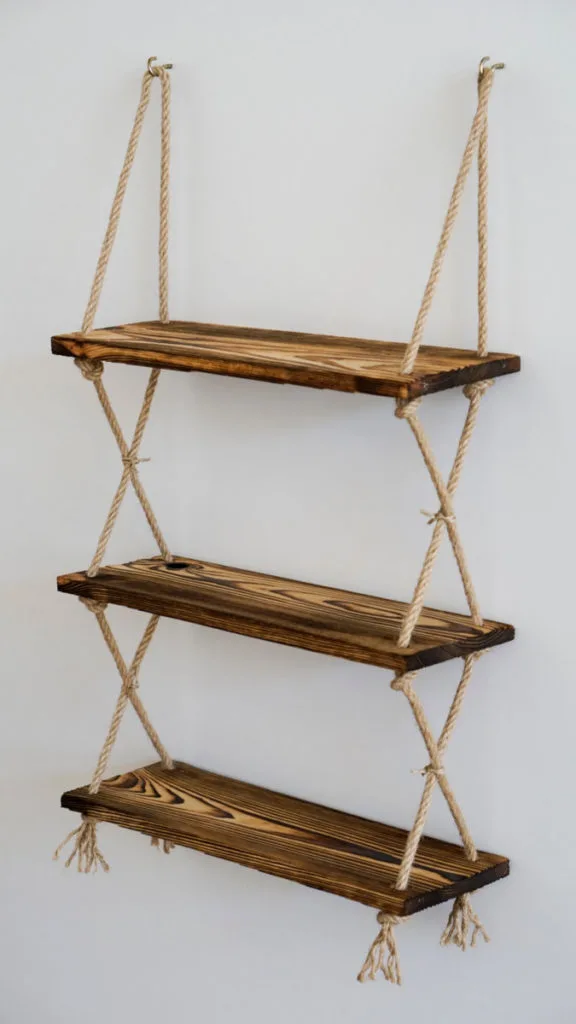
- Making new shelves against a wall using reclaimed materials. (or example, you might make some new shelves from old wood pallets, or from planks between upright supports made from bricks.
- Using an old step ladder as a series of shelves for pots, either inside your home or in your garden.
- Making use of old furniture – an old bookcase could be used, of course. But you could also do something more unusual, such as creating a series of tiered shelves from an old chest of drawers.
- Hanging shelves from ropes or wires, suspended from hooks, bolts or other fasteners.
- Using suction cup hooks to suspend smaller shelves or small containers in front of a window.
2. Vertical Gardens
While shelving is itself one way to make use of the vertical space available, you can also make a range of dedicated vertical gardens that allow you to grow herbs (and other leafy plants) in the vertical plane.
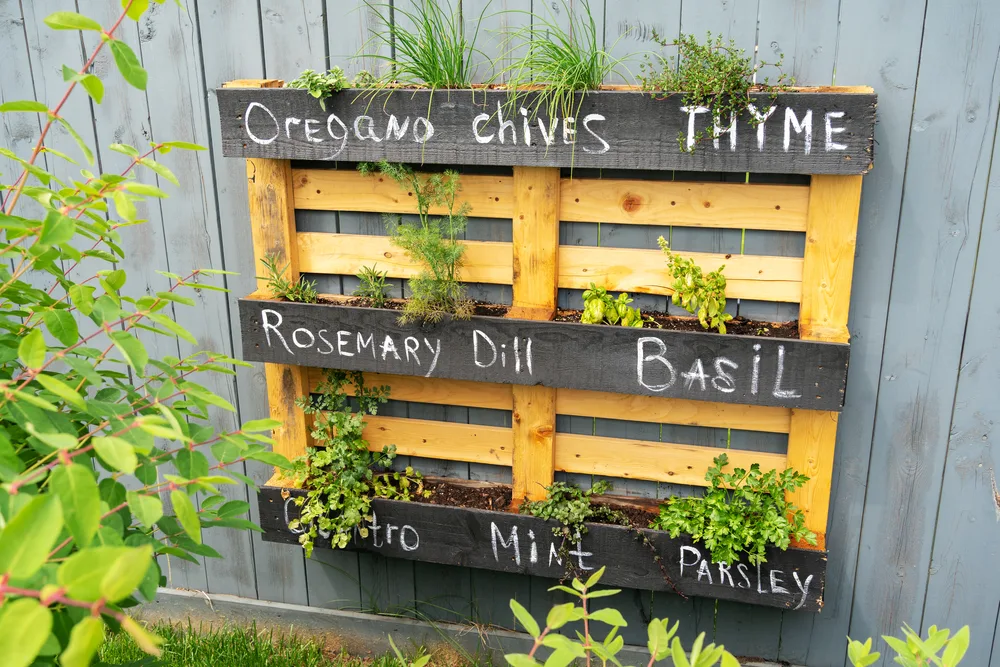
For example, to make a herb garden against a sunny wall (inside your home or outside in your garden), you might:
- Make a wood pallet vertical garden.
- Create a vertical garden from plumbing pipes or guttering (perhaps growing plants in water not soil).
Best DIY Vertical Garden with PVC Pipes @ dexorate.com
- Make a fabric vertical garden with planting pockets (using a shoe organizer, or making your own from reclaimed fabric).
Small Space Vertical Herb Garden @ abeautifulmess.com.
Those are just three types of vertical garden that will allow you to grow a lot of herbs in a narrow space up against a wall or fence.
3. Planting Towers or Barrels
Another idea to use vertical space to grow herbs is to create planting towers (or barrels that are planted up not only on top or also in the sides). You might make:
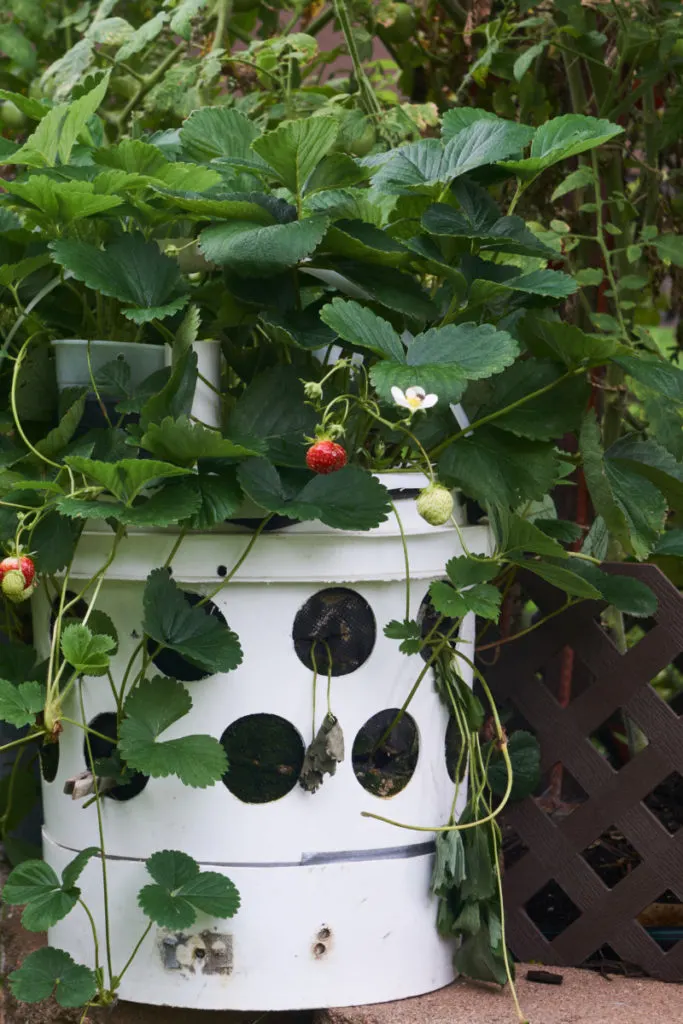
- A tower of 5 gallon buckets. (The strawberry tower in the link below could also be used to grow a wide range of herbs.)
Strawberry tower @ smfs-mastergardeners.ucanr.org.
- A bottle tower herb garden.
How to Make a Bottle Tower Garden @ backyardboss.net.
- A 55 Gallon barrel garden.
Garden in a barrel @ greenbeanconnection.wordpress.com.
If you use your imagination, you should be able to think of plenty of other reclaimed materials that can be upcycled and used to make towers or planting barrels in a similar way.
4. Wall-Mounted Planters
You can also use a wide range of planters affixed to a wall or fence. They don’t always necessarily have to be attached to a complete vertical garden set up but could be squeezed in wherever you have a little space.
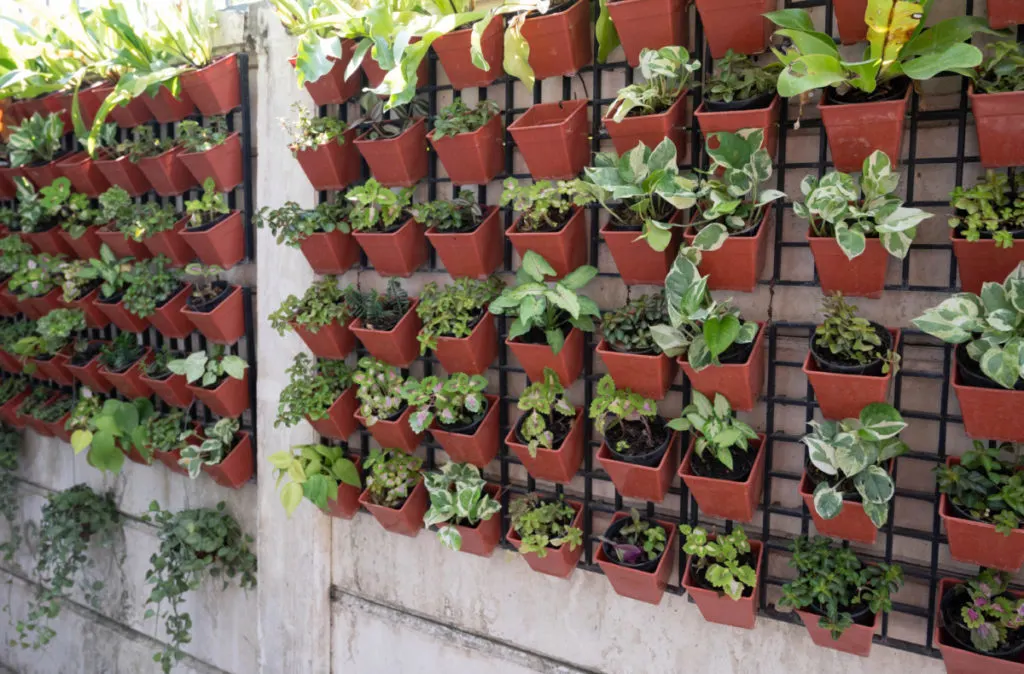
Just as above, you could use plastic bottles. They could be placed not just as planting towers but also as stand alone wall-mounted planters. Milk containers could also be used to make planters against a vertical surface – either individually attached, or strung along a wooden rod, branch or cane.
You could also affix an old grater to a wall to give an additional planter for your herbs. And many other old kitchen items could also be upcycled in a similar way.
Upcycled cheese grater planters @ pinterest.co.uk.
You could also simply create a series of wooden wall-mounted box planters. Simple metal bands or hoops to secure plant pots onto a wall could also work well. You could also use macrame to make a wall mounted basket for a herb plant in a pot.
5. Hanging Planters
Macrame can also work well for hanging planters, and the pots can also be hand-crafted or upcycled. You can even make your own ‘yarn’ from old T-shirts or other old clothes for the purpose.
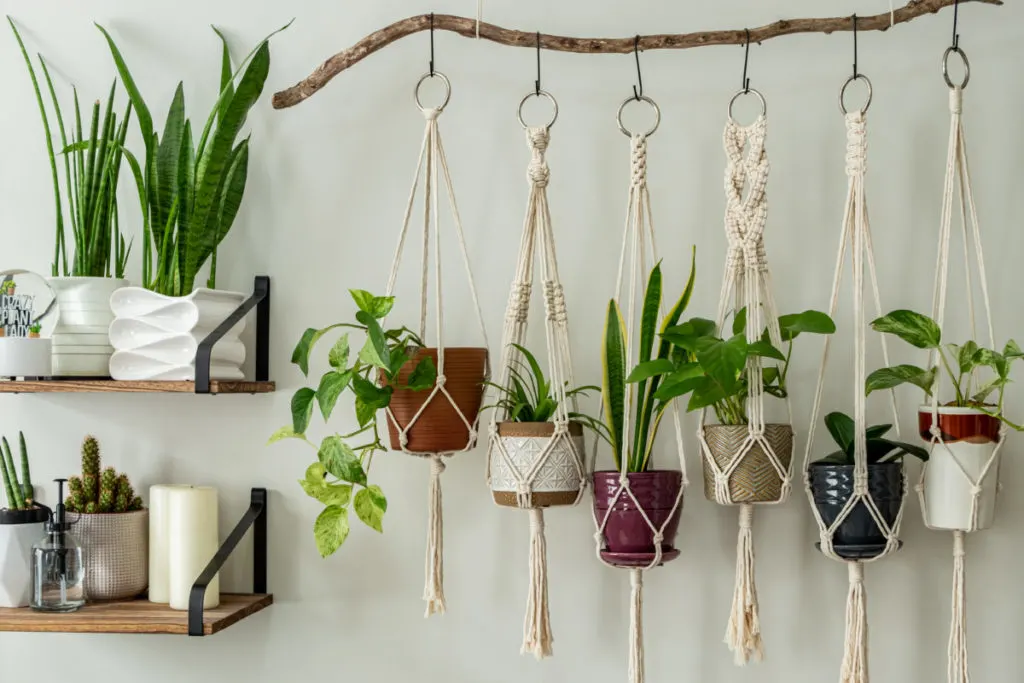
Again, you can also make your own hanging planters from old plastic bottles, milk containers, food grade buckets or other household waste. Simply string them along wires, or hang them from ropes, wires or strings.
If you learn some simple basketry skills, you could also create your own hanging baskets.
There are so many things that could be upcycled and reused as hanging baskets in your herb garden – from old tires, to kitchen items, to old embroidery hoops…
You can also simply use soil, moss and string to make ball planting planters to grow your herbs.
Moss Ball Hanging Planter @ apartmenttherapy.com.
6. Stacked Containers
One other super-easy way to think about using more vertical space in a herb garden is simply to stack different-sized pots. Start with a large pot or planter at the bottom, then work your way upwards, adding pots in decreasing size. Plant into the spaces around the edges of this pyramid-like construction to make the most of all the space.
Stacked Pot Planting Tower @ backyardboss.net.
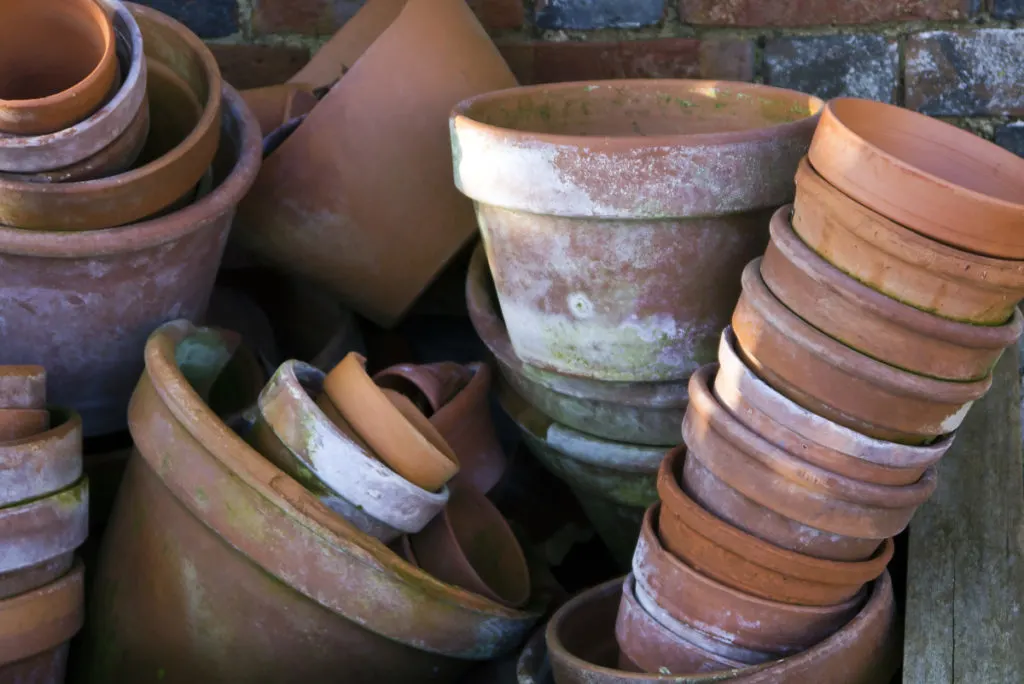
One good thing about using stacked pots to grow herbs is that you can grow a number of different herbs with different growing requirements in one small space. Grow heat and sun-loving plants at the top and to the south side of the stack, and those that like more shade and moisture lower down and to the north.
7. Herb Spirals
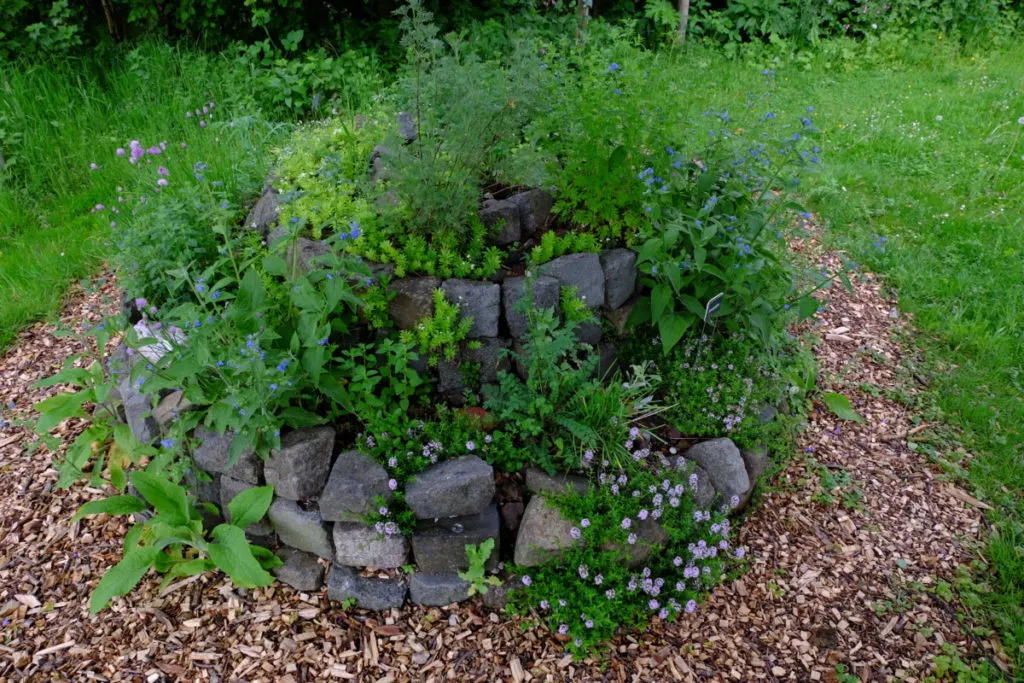
A herb spiral is almost a scaled-up version of the idea above. A spiral form mandala garden can be made in a range of sizes and could suit many herb gardens. A herb spiral is another great way to create a suitable environment for a wide range of herbs (or other plants) in a relatively small space. Creating raised beds in this shape can help you maximize edge, which is the most productive part of an ecosystem.
If you have a dedicated outdoor herb garden, then I would definitely recommend creating a herb spiral. I made one at my old allotment, and you can see some images at the link below:
How to Make a Herb Spiral @ seedtopantryschool.com.
That one was only small. But the higher you make your spiral, the more herbs you’ll be able to incorporate over the same area of ground.
8. Living Herb Bed Edging
In a very small garden, however, you might not feel that you have space for a dedicated, separate herb garden at all. You might not need one. There are a range of herbs that make excellent companion plants for fruits and vegetables. Aromatic herbs often attract a wide range of pollinators and other beneficial insects. They may confuse, distract or repel certain pest species. And they can also be useful in a wide range of other ways when planted close to other crops.
One way to save space is to use your companion herbs as bed edging rather than trying to find space for them in the actual growing areas. Living bed edging saves the space that would have been taken up by solid bed edging and allows you to grow more plants.
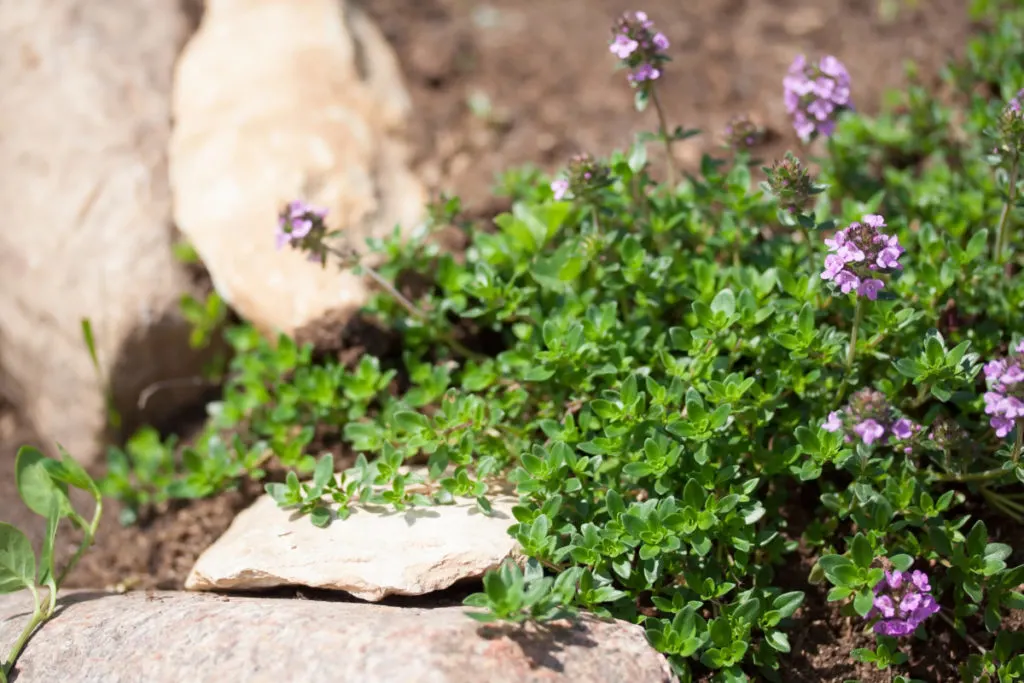
For example, you could use thyme or other Mediterranean herbs to create a low edging between a path or seating area and your vegetable beds or other growing areas.
9. Herb Planting in Bed Edging
Another idea is to plant a range of herbs within your solid bed edging. Bed edging that you could plant herbs into includes, for example:
- Hollow upright bamboo sections
- Reclaimed breeze blocks
- Wire gabions
- Metal pipe sections
- Ceramic pipe sections
- Tin cans
- Plant pots
Creating plantable edging is a great way to make sure you make the most of every inch of space in your garden.
Another interesting thing to consider is that drought-tolerant herbs like marjoram, lavender, thyme etc. could also be grown on the sides of a stone wall. If the wall is mortared, you could carefully chip mortar away to make planting pockets for your herbs.
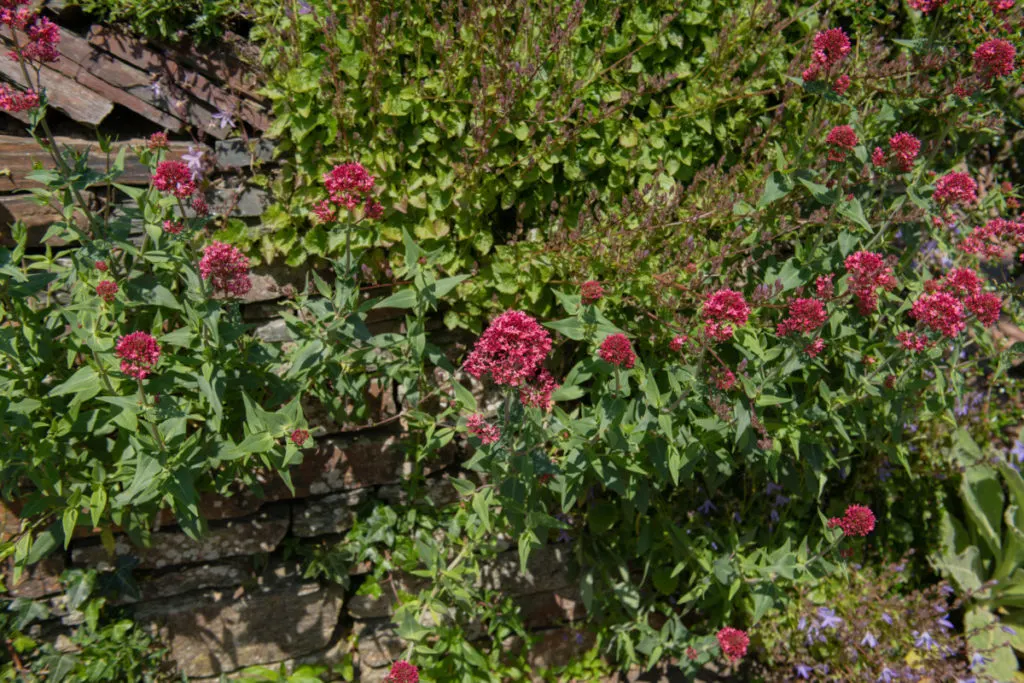
Making new planting pockets in stone walls is one of my favorite ways to make space for herbs in gardens where they may not previously have been considered.
10. Herb Planting in Pathway/ Paving Cracks
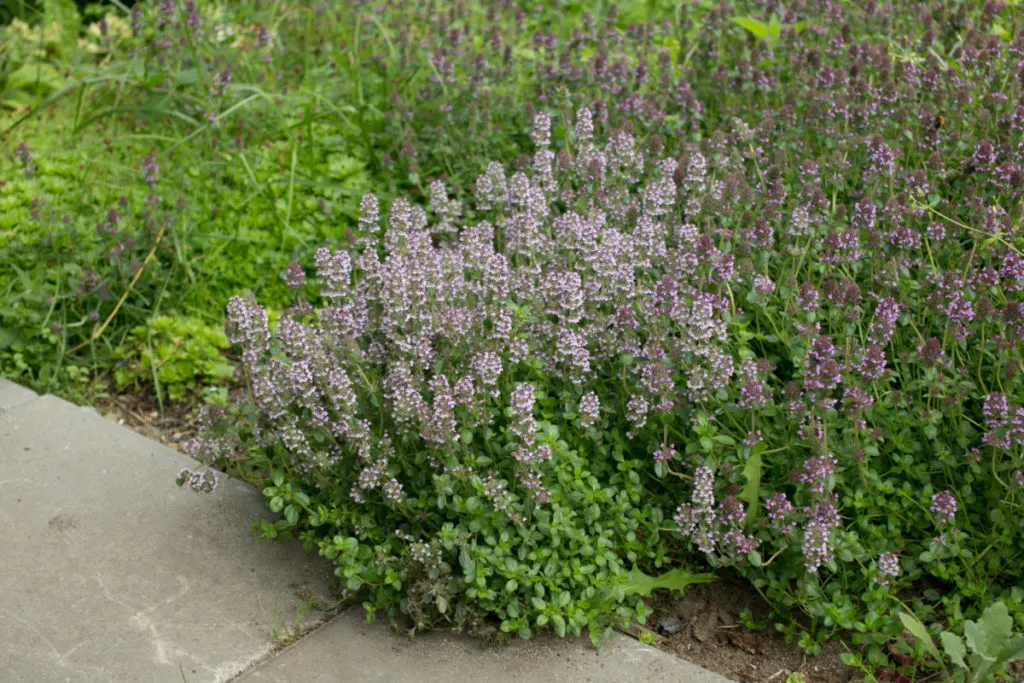
If you are making new paths or paving in your garden, you could consider leaving gaps between the pavers. This could leave space to grow some low-growing herbs, like thyme, for example. Hardy herbs won’t mind being stepped on once in a while. But you’ll get a yield from a space that would otherwise be mostly wasted.
11. Layered Planting
So far, the space-saving ideas for herb gardens I have shared have revolved around the structures and containers we choose, and where we grow our herbs. But there are a couple of other strategies that don’t involve these things that will also save space.
Firstly, no matter where and how you grow your herbs, think about how you combine the plants that you grow. Layered planting, with taller trees, shrubs and plants, with a herbaceous layer below them, and then a lower ground cover layer too, really does allow you to fit a lot more in.
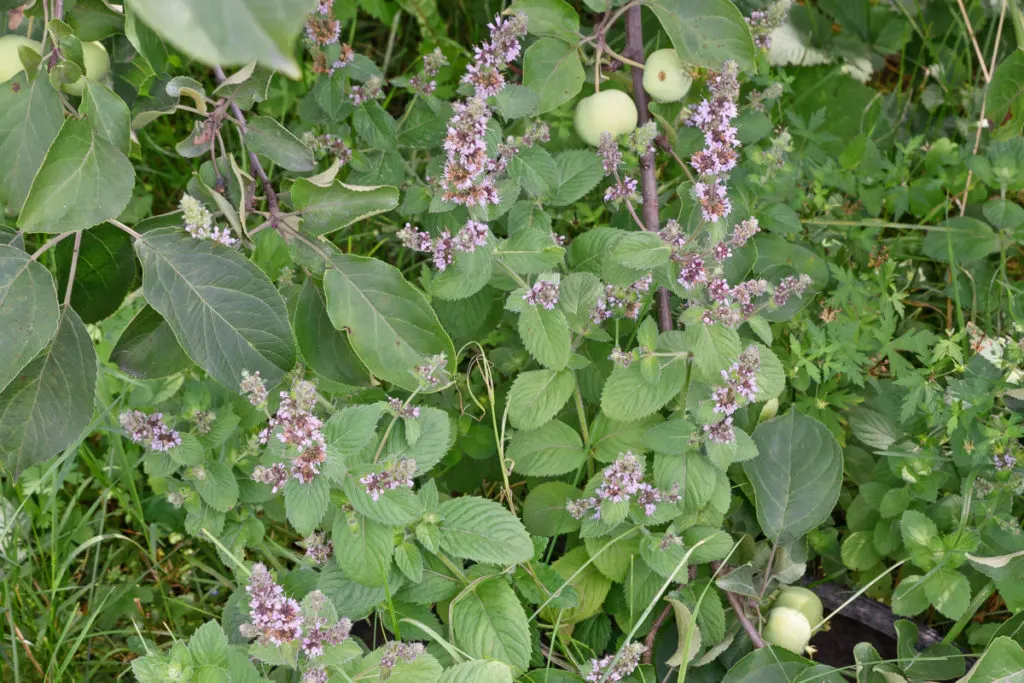
Whether we’re talking about a dedicated herb garden (even container ones), a mixed kitchen garden, or a low-maintenance forest garden, the same principles apply. The idea is to find ways to mimic natural ecosystems, and plant so that plants and wildlife work together. The goal is to boost biodiversity and increase the number of beneficial interactions as much as possible.
12. Layering in Time as Well as Space
Finally, think about the herb garden holistically – consider time as well as space. It is not only layering plants in space that will allow you to grow more in a smaller area. By making use of the way in which plants change and develop over time in your herb garden, you can also layer plants in time.
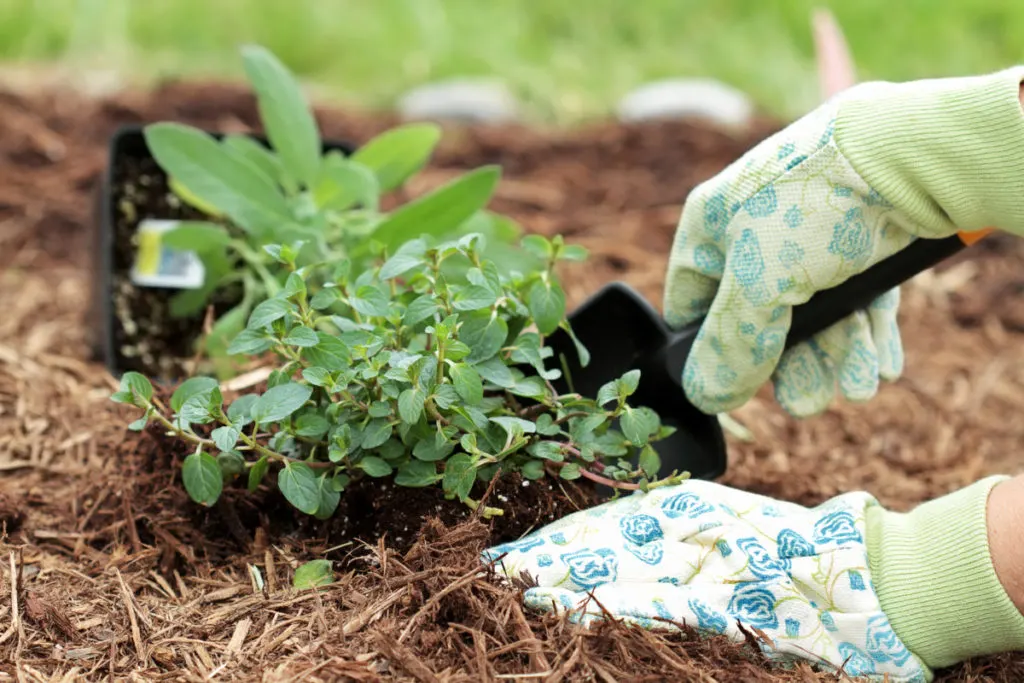
For example, you might grow some annual herbs amongst smaller perennial plants, and obtain an additional yield before the perennials grow to fill the space. You might also sow annual herbs successionally, to extend the harvesting period, sowing quicker growers between slower growing plants. Overlap plants in time and let them share the space during a part of the growing season. This is another way to increase your yield – no matter how little space is available.
Consider the ideas above and you should be able to find multiple ways to increase the number of herbs you are able to grow where you live.

Get the famous Rural Sprout newsletter delivered to your inbox.
Including Sunday musings from our editor, Tracey, as well as “What’s Up Wednesday” our roundup of what’s in season and new article updates and alerts.

